AMD launches Radeon AI Pro R9700 to challenge Nvidia's AI market dominance
RDNA 4 for professionals
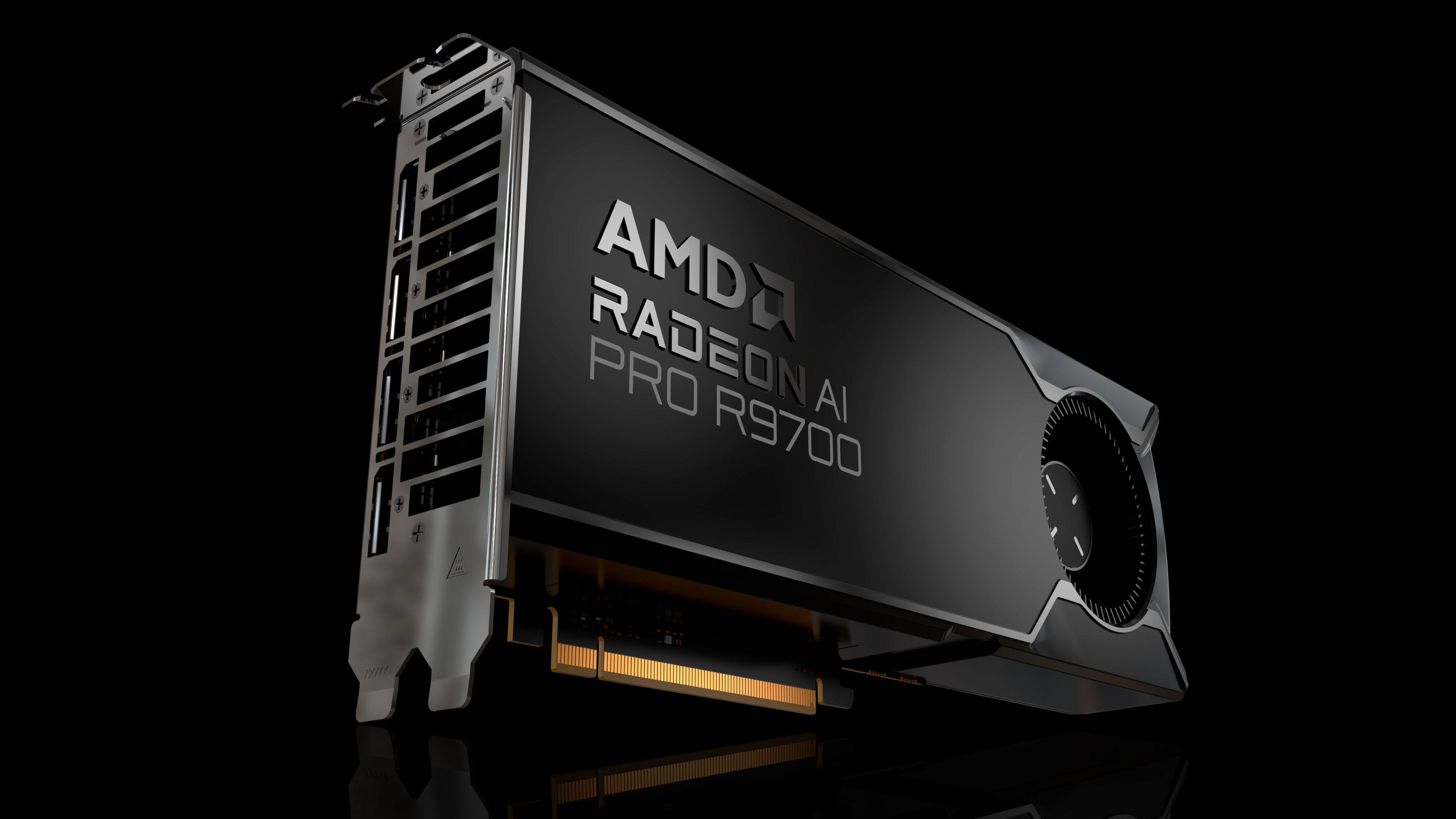
AMD has been busy at Computex 2025, where the chipmaker unveiled the exciting Radeon RX 9060 XT and the Ryzen Threadripper 9000 series. To cap off its series of announcements, AMD is thrilled to introduce the Radeon AI Pro R9700, a PCIe 5.0 graphics card designed specifically for professional and workstation users.
RDNA 4 is an architecture geared towards gaming, but that doesn't mean AMD can't apply it to professional-grade graphics cards. For instance, RDNA 3 saw the mainstream Radeon RX 7000 series successfully coexisting with the Radeon Pro W7000 series. The same situation will occur with RDNA 4. AMD has already unveiled four RDNA 4-powered gaming graphics cards, yet the Radeon AI Pro R9700 is the first RDNA 4 professional graphics card to enter the market. The new workstation graphics card aims to replace the RDNA 3-powered Radeon Pro W7800, which has been faithfully catering to consumers since 2023.
The Radeon AI Pro R9700 utilizes the Navi 48 silicon. It's currently the largest RDNA 4 silicon to date, with a die size of 357 mm² and home to 53.9 billion transistors. Navi 48 is also found in the Radeon RX 9070 series. It's a substantially smaller silicon than the last-generation Navi 31 silicon, which is 529 mm² with 57.7 billion transistors. It's nothing short of impressive that Navi 48 is roughly 33% smaller but still has 93% of the transistors of Navi 31.
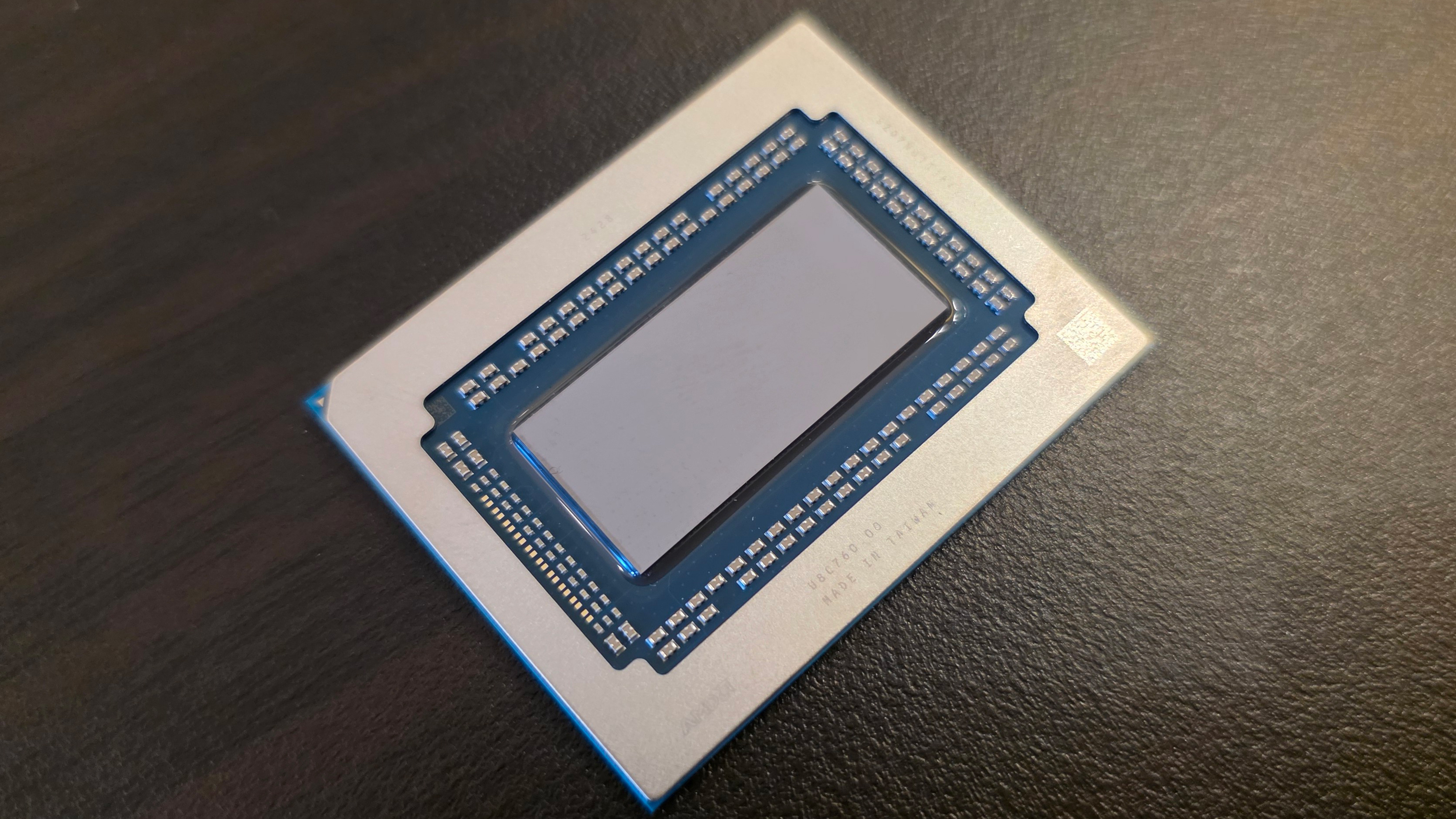

Navi 48, a product of TSMC's N4P (4nm) FinFET process node, adheres to a monolithic design. On the contrary, Navi 31 features an MCM (Multi-Chip Module) design, consisting of chiplets interconnected to a monolithic die. That's the reason why Navi 31 is so enormous. The GCD (Graphics Complex Die) alone measures 304.35 mm², whereas each of the six MCDs (Memory Cache Die) is 37.52 mm².
With Navi 48, AMD returned to a monolithic die and, with N4P's help, reduced the die size by 33%. Nonetheless, Navi 48 is up to 38% denser than Navi 31. The former has a density of 151 million transistors per mm², whereas the latter comes in at 109.1 million transistors per mm².
In terms of composition, the Navi 48 features 64 RDNA 4 Compute Units (CUs), which enable a maximum of 4,096 Streaming Processors (SPs). In contrast, the Navi 31 is equipped with 96 RDNA 3 CUs, for a total of 6,144 SPs. More CUs don't necessarily mean more performance since RDNA 4 delivers considerable generation-over-generation performance uplift over RDNA 3.
AMD Radeon AI Pro R9700 Specifications
Graphics Card | Radeon AI Pro R9700 | Radeon Pro W7800 |
|---|---|---|
Architecture | Navi 48 | Navi 31 |
Process Technology | TSMC N4P | TSMC N5 / N6 |
Transistors (Billion) | 53.9 | 57.7 |
Die size (mm²) | 357 | 529 |
SMs / CUs | 64 | 70 |
GPU Shaders (ALUs) | 4,096 | 4,480 |
Tensor / AI Cores | 128 | 140 |
Ray Tracing Cores | 64 | 70 |
Boost Clock (MHz) | 2,920 | 2,525 |
VRAM Speed (Gbps) | ? | 18 |
VRAM (GB) | 32 | 32 / 48 |
VRAM Bus Width | 256-bit | 256-bit / 384-bit |
L2 / Infinity Cache (MB) | 64 | 64 ⁄ 96 |
Render Output Units | 128 | 128 |
Texture Mapping Units | 256 | 280 |
TFLOPS FP32 (Boost) | 47.8 | 45.3 |
TFLOPS FP16 (INT4/FP4 TOPS) | 95.7 | 90.5 |
Bandwidth (GB/s) | 640 | 576 / 864 |
TBP (watts) | 300 | 260 / 281 |
Launch Date | July 2025 | April 2023 |
Launch Price | ? | $2,499 / ? |
The Radeon Pro W7800 leverages the full Navi 48 silicon, so it's rocking 4,096 SPs, 9% fewer than the Radeon Pro W7800. This correlates to the graphics card having 9% fewer AI accelerators. In the Radeon AI Pro R9700 's defense, the CUs are RDNA 4, and the AI accelerators are second-generation.
Stay On the Cutting Edge: Get the Tom's Hardware Newsletter
Get Tom's Hardware's best news and in-depth reviews, straight to your inbox.
Regarding FP16 performance, the Radeon AI Pro R9700 peaks at 96 TFLOPS, 6% faster than the Radeon Pro W7800. AMD rates the graphics card with a 1,531 TOPS of AI performance.
AMD claims the Radeon AI Pro R9700 offers 2X improved performance over the Radeon Pro W7800 in DeepSeek R1 Distill Llama 8B. For some strange reason, AMD compared the Radeon AI Pro R9700 to the GeForce RTX 5080. Tested in a few large AI models, the Radeon AI Pro R9700 delivered up to 5X higher performance than the RTX 5080.
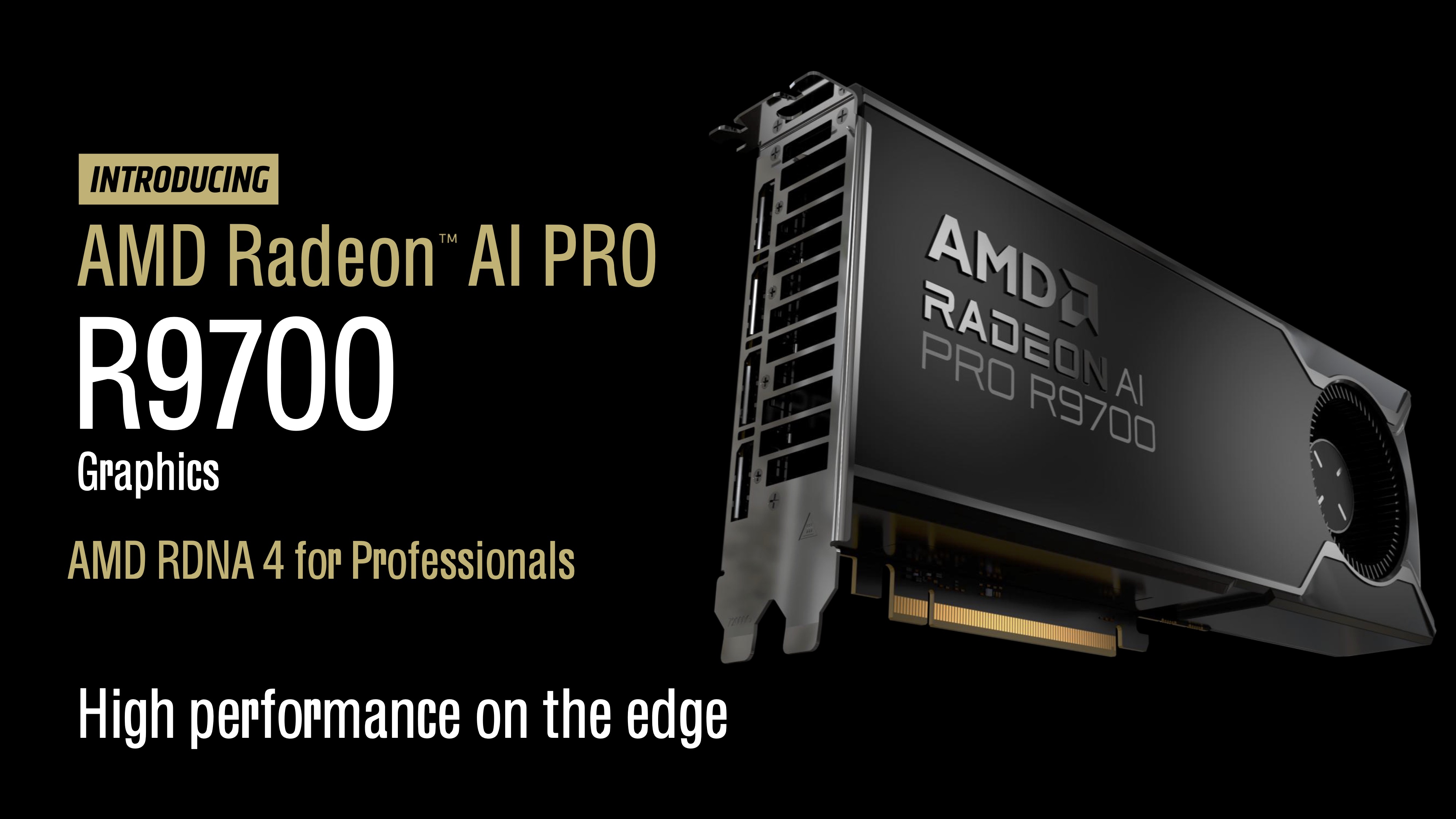
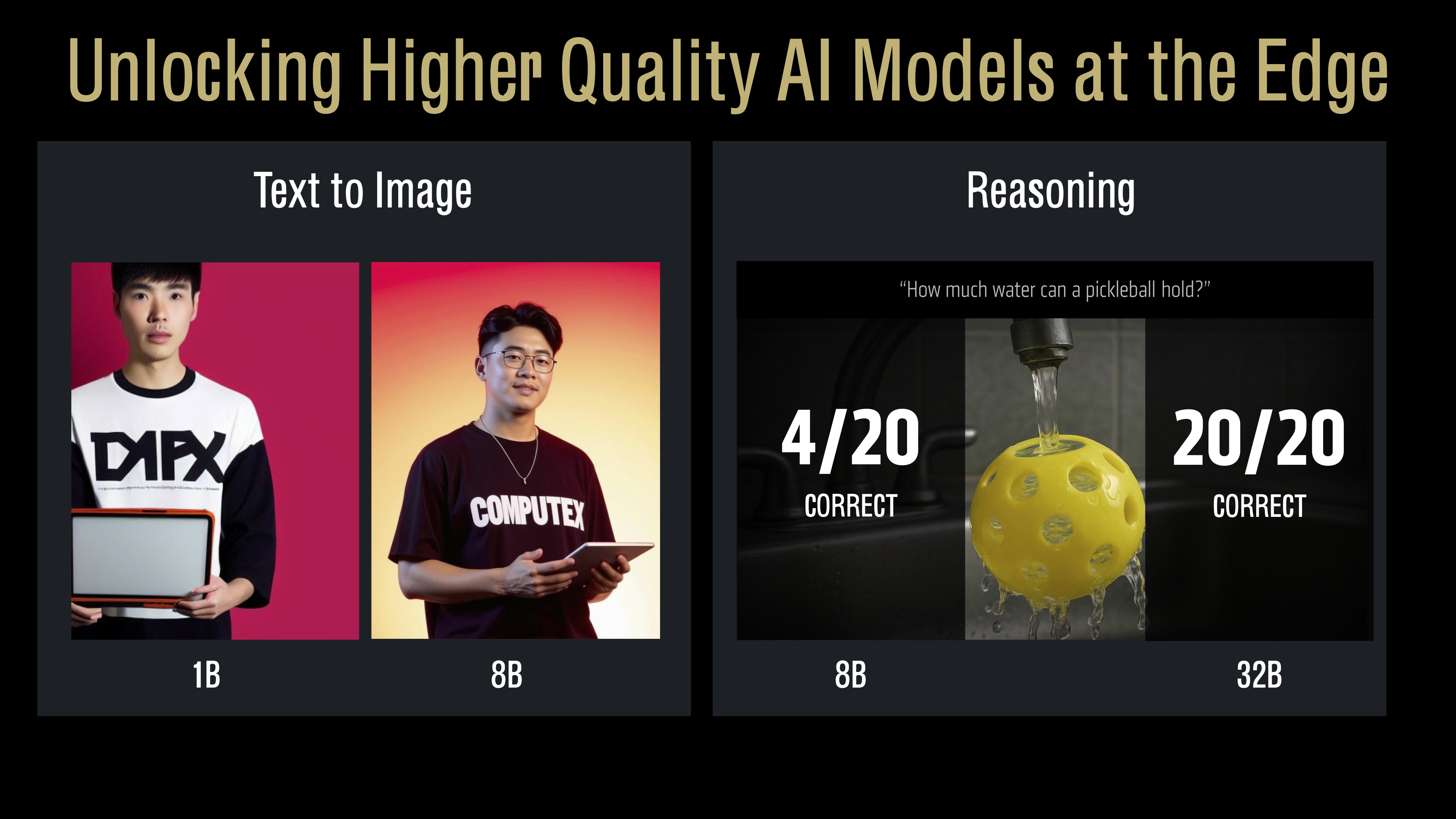
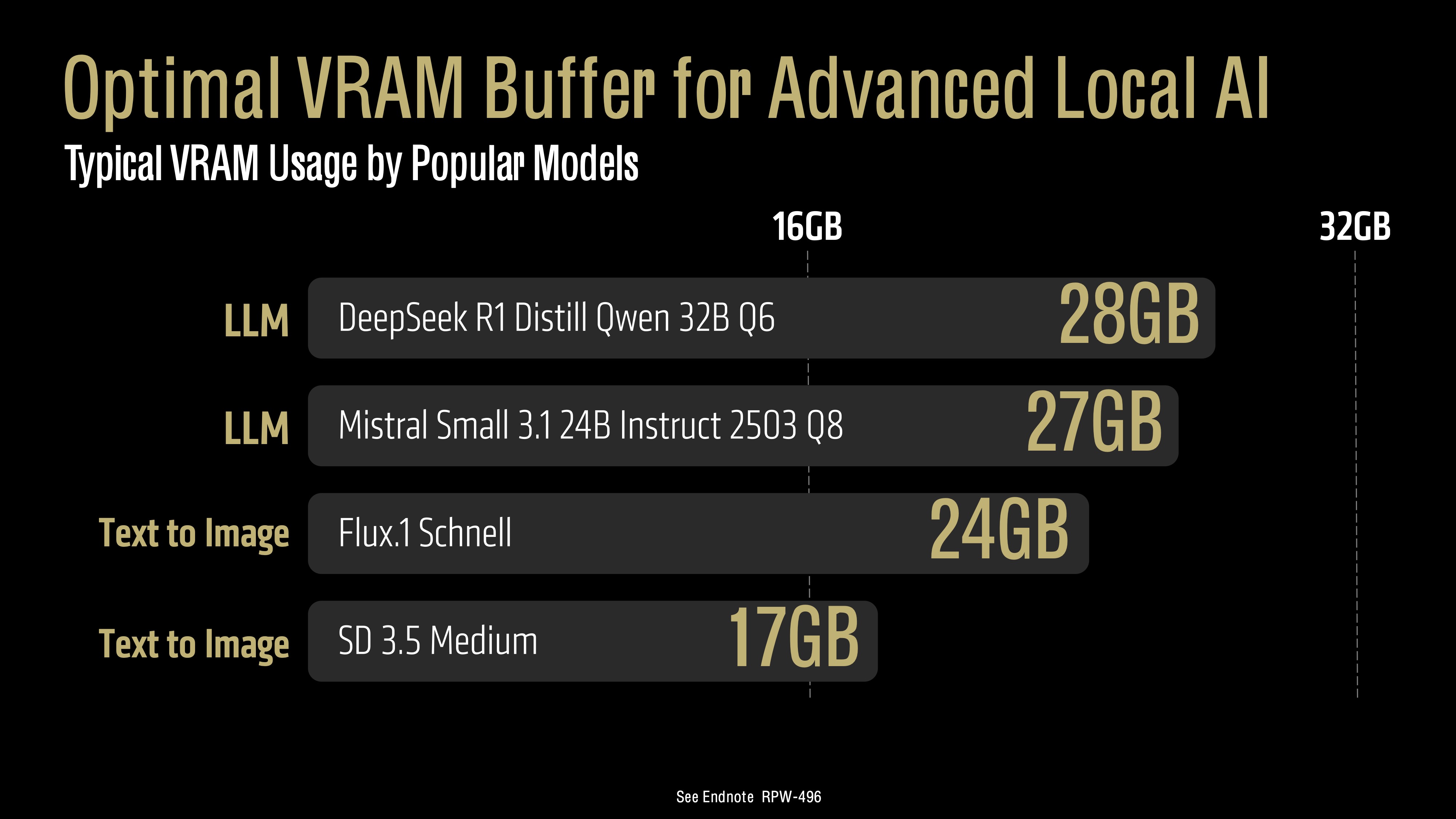
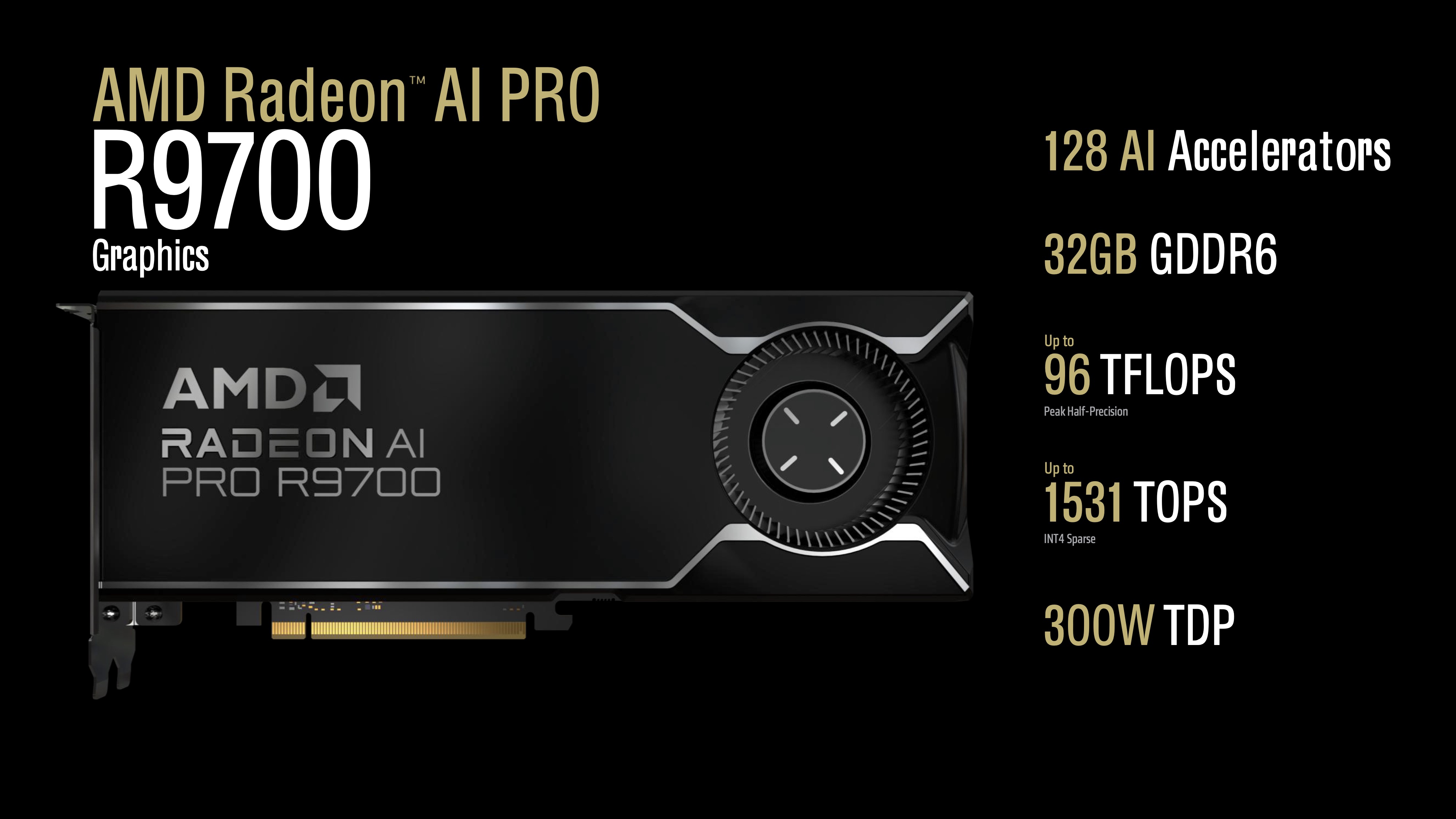
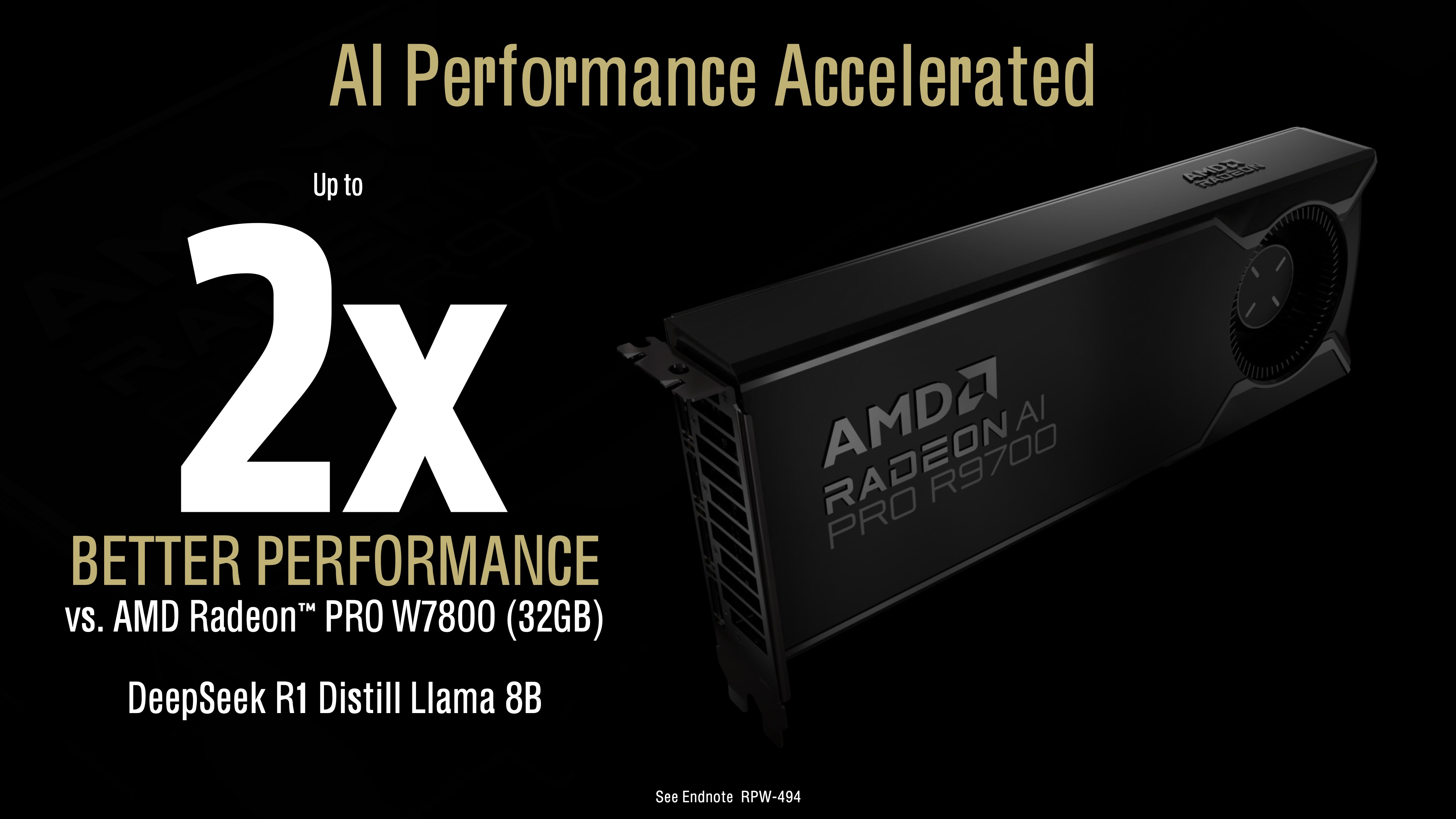
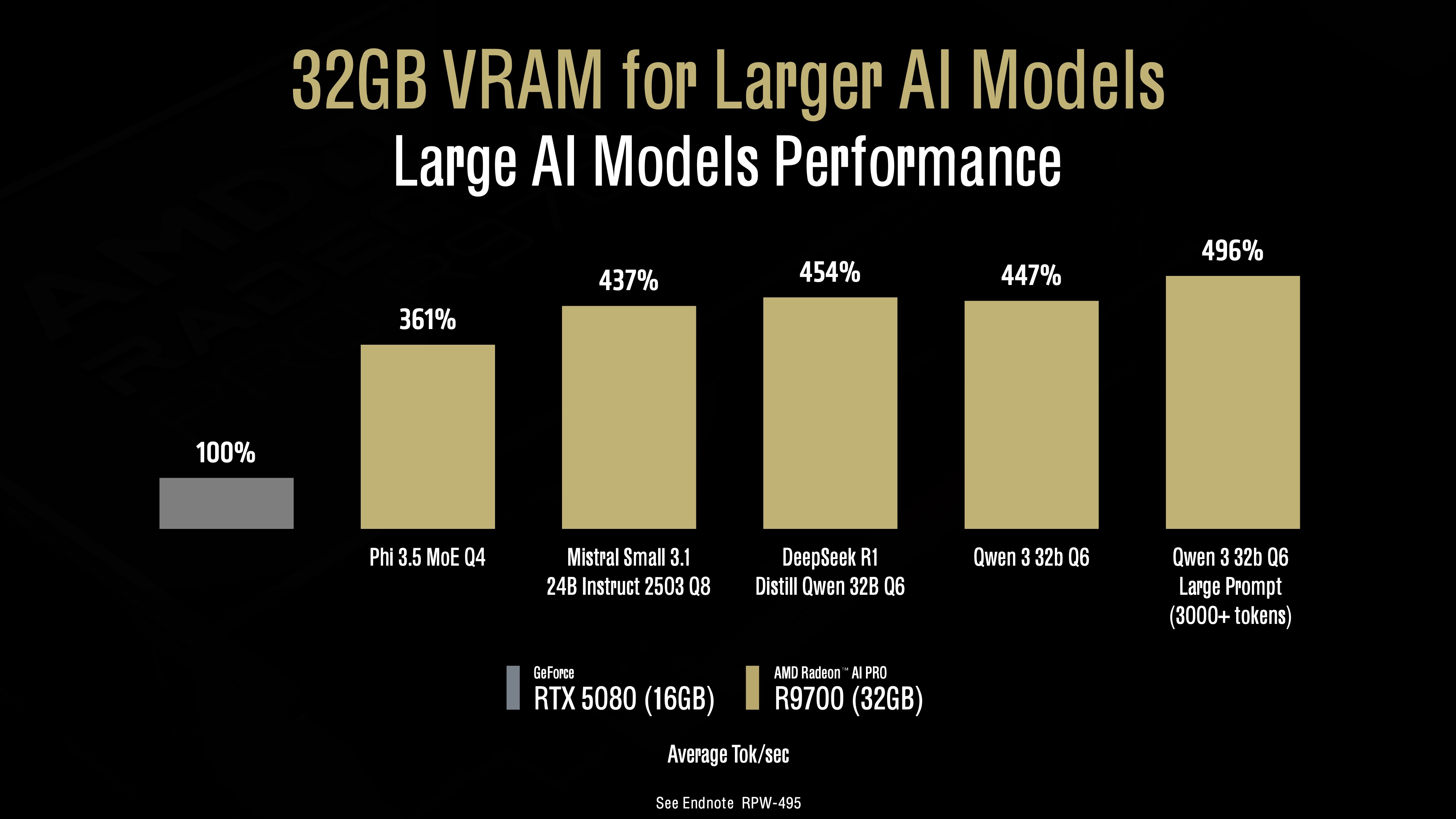
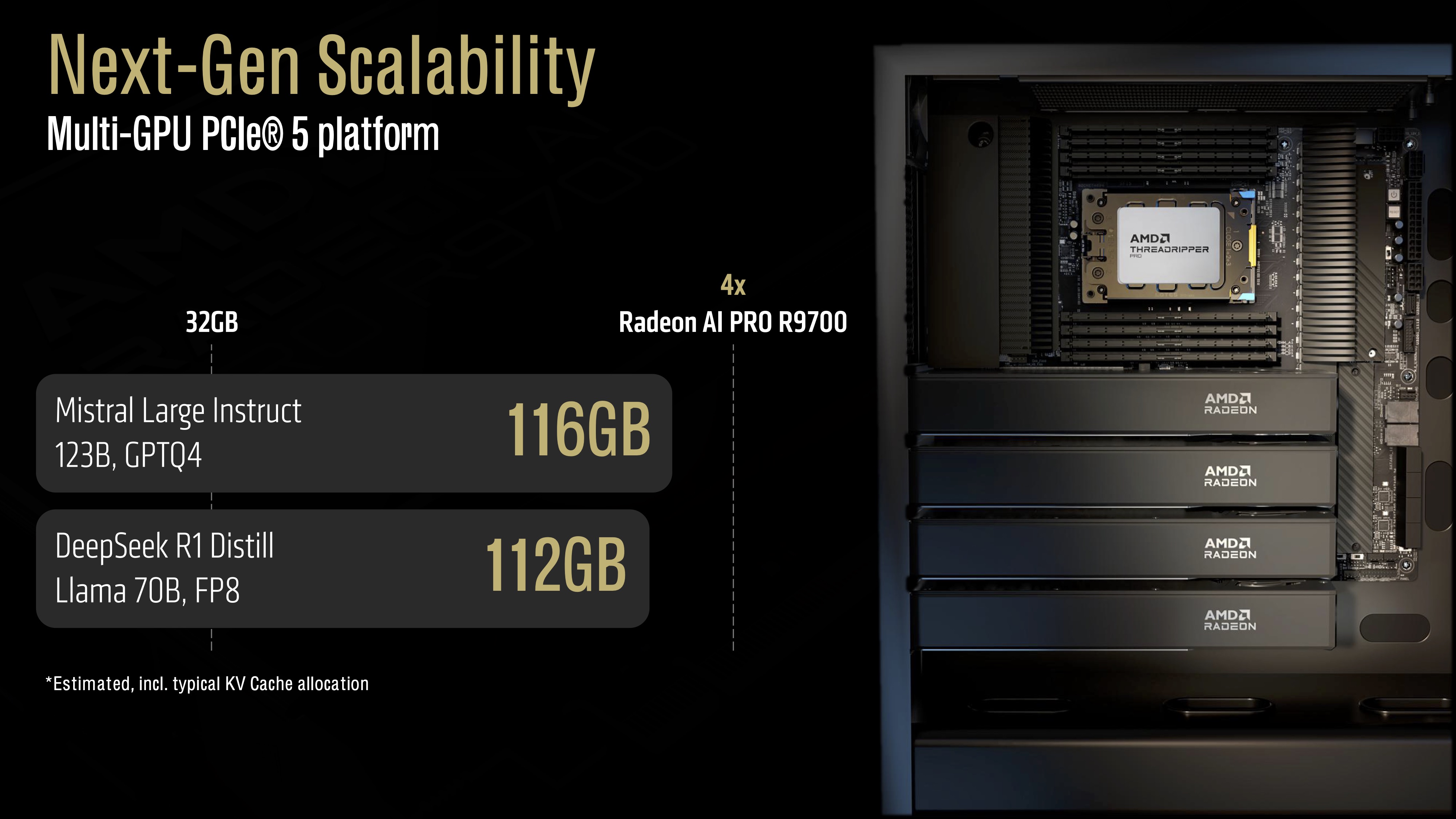
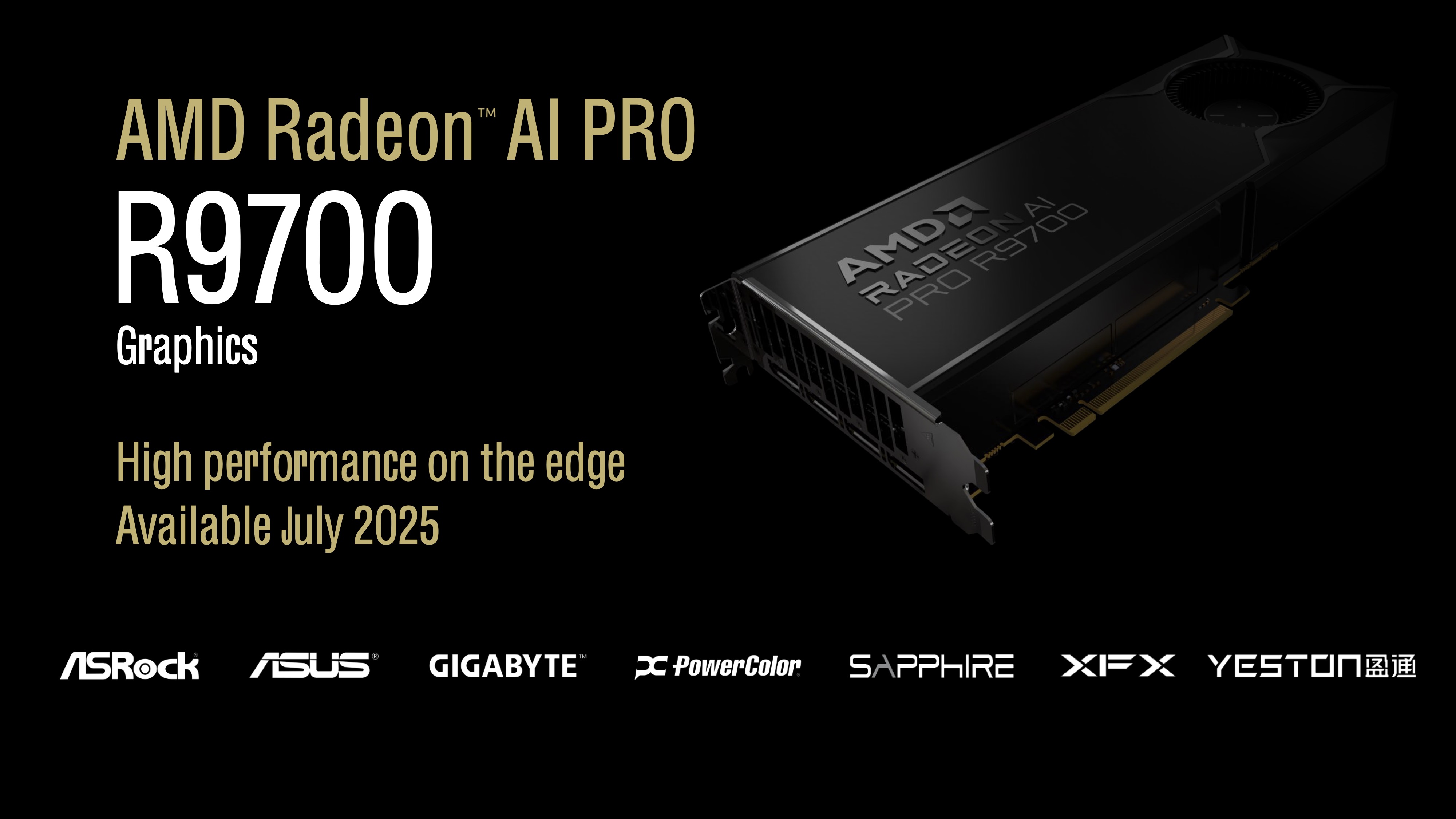

The Radeon AI Pro R9700 is equipped with 32GB of GDDR6 memory and a 256-bit memory interface. This configuration results in a memory bandwidth of up to 640 GB/s, 11% more than the Radeon Pro W7800 32GB but 26% less than the Radeon Pro W7800 48GB. As for the Infinity Cache, the Radeon AI Pro R9700 still has 64MB, the same as the Radeon Pro W7800 32GB.
With 32GB of onboard memory, the Radeon AI Pro R9700 can tackle most AI models. It has the capacity of the Radeon Pro W7800, but not as much as the 48GB variant. The Radeon AI Pro R9700's typical blower-type design will enable users to rock up to four of them inside a single system, such as AMD's Ryzen Threadripper platform, which has good multi-GPU support. With four of them, users will have access to 128GB, more than enough for heavy models that exceed 100GB of VRAM usage.
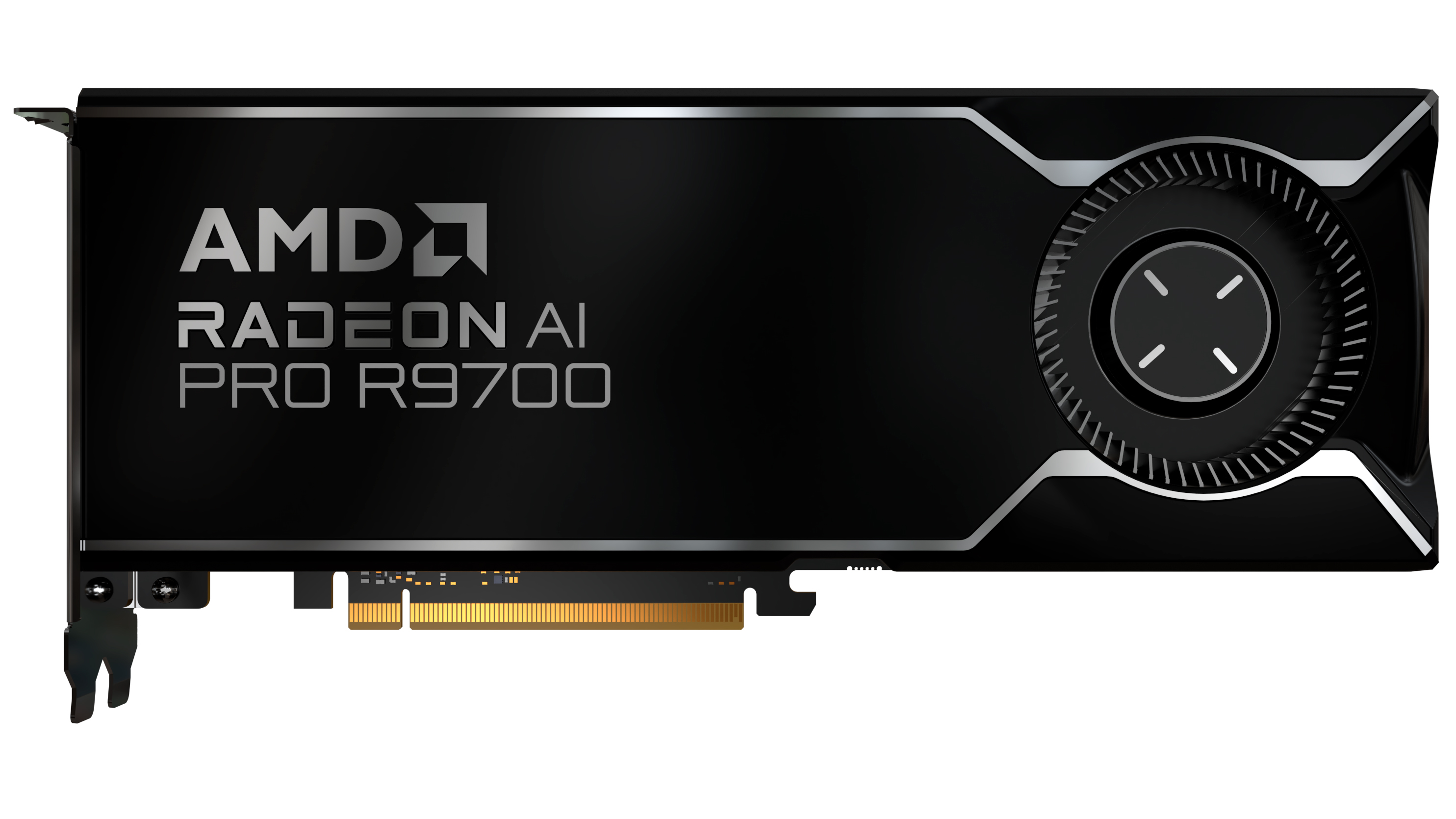
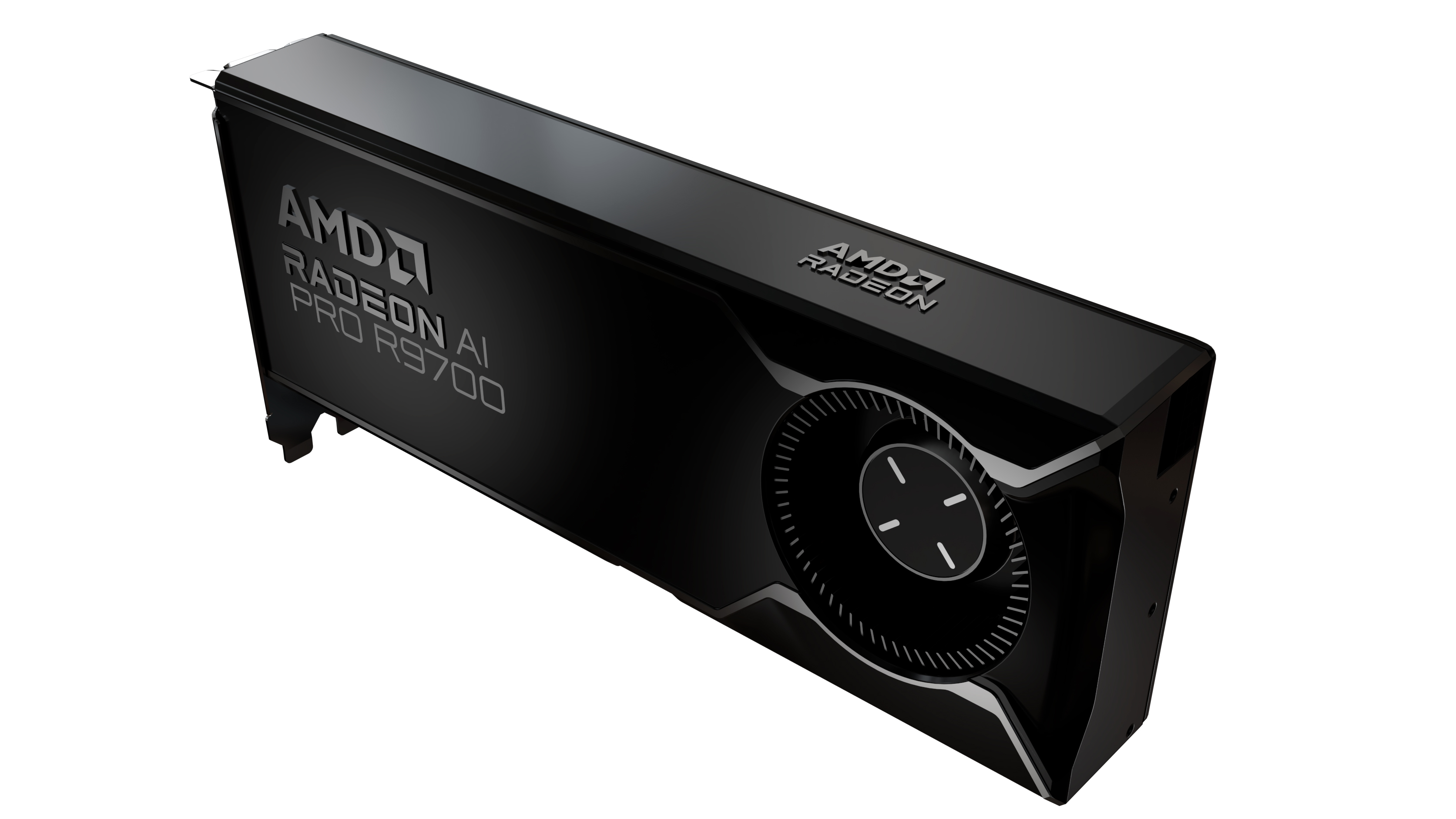
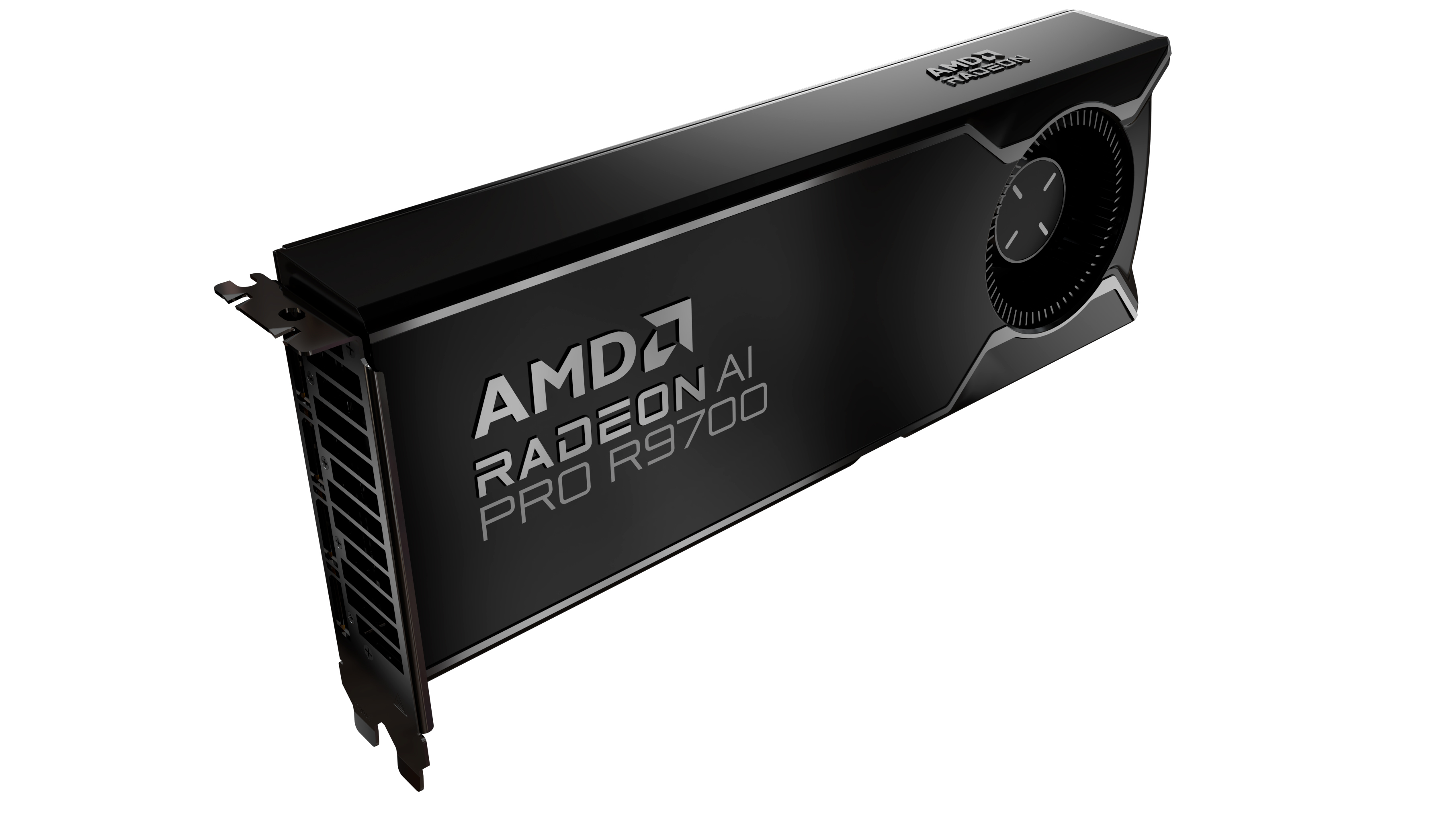
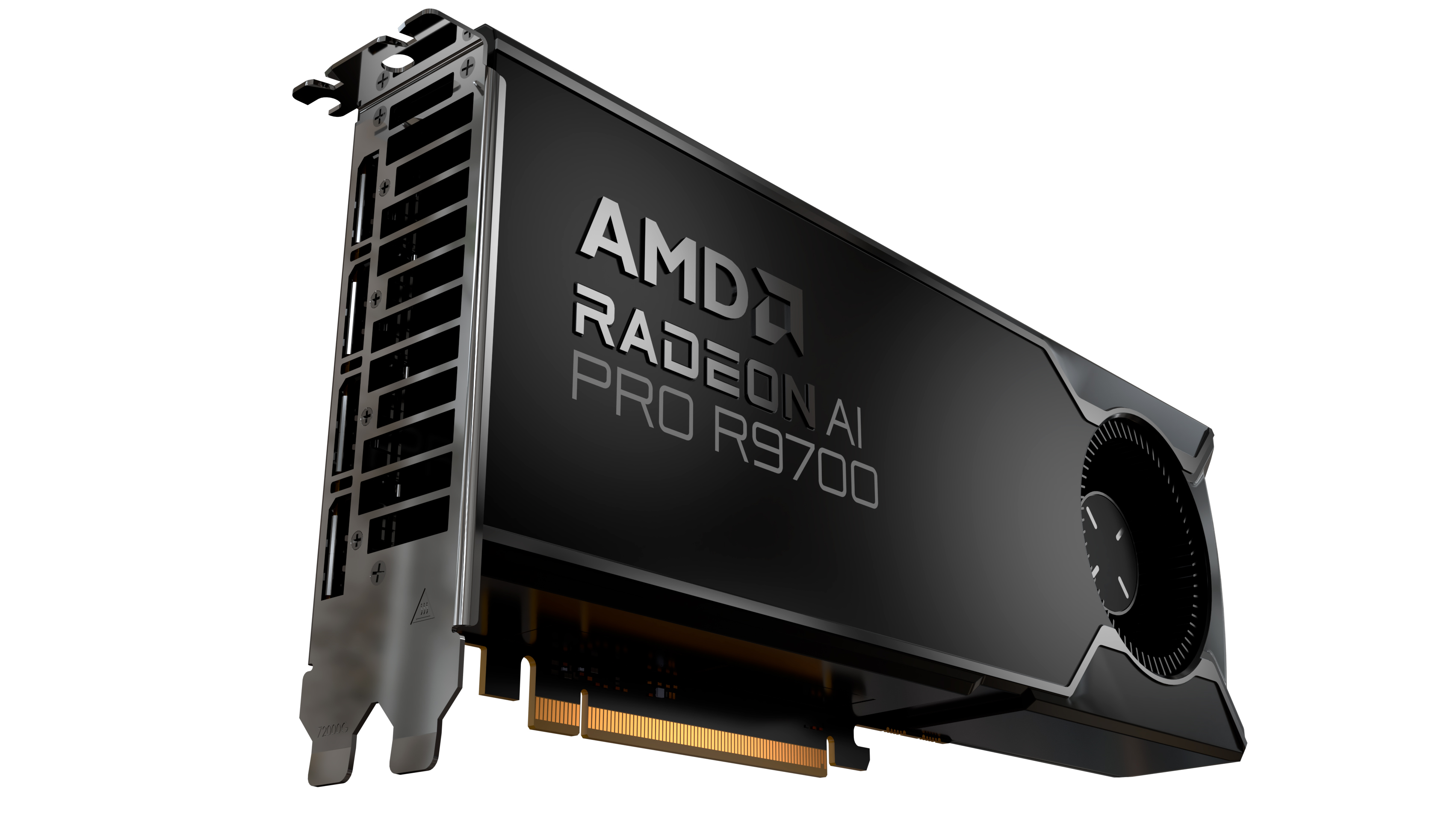
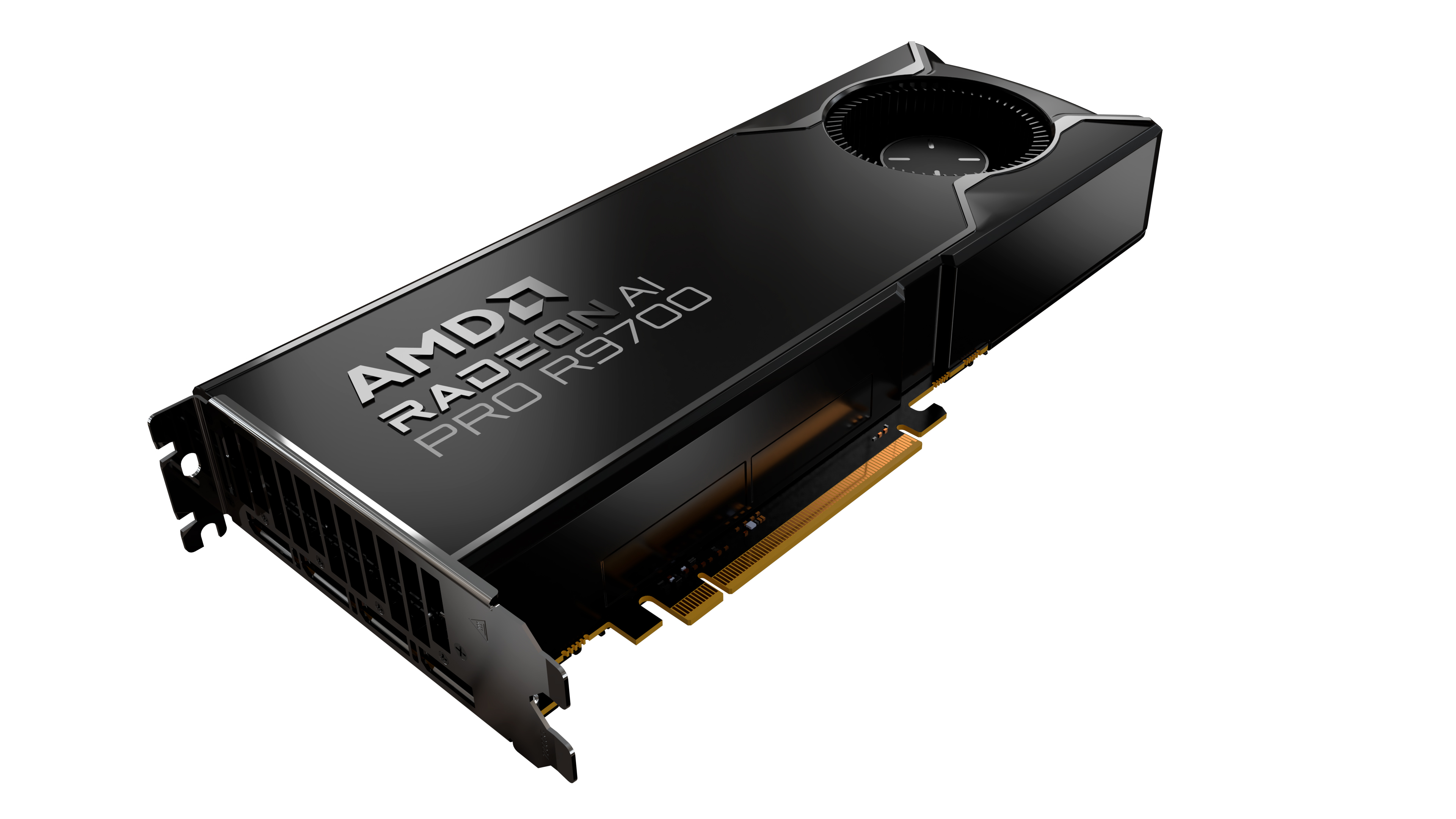
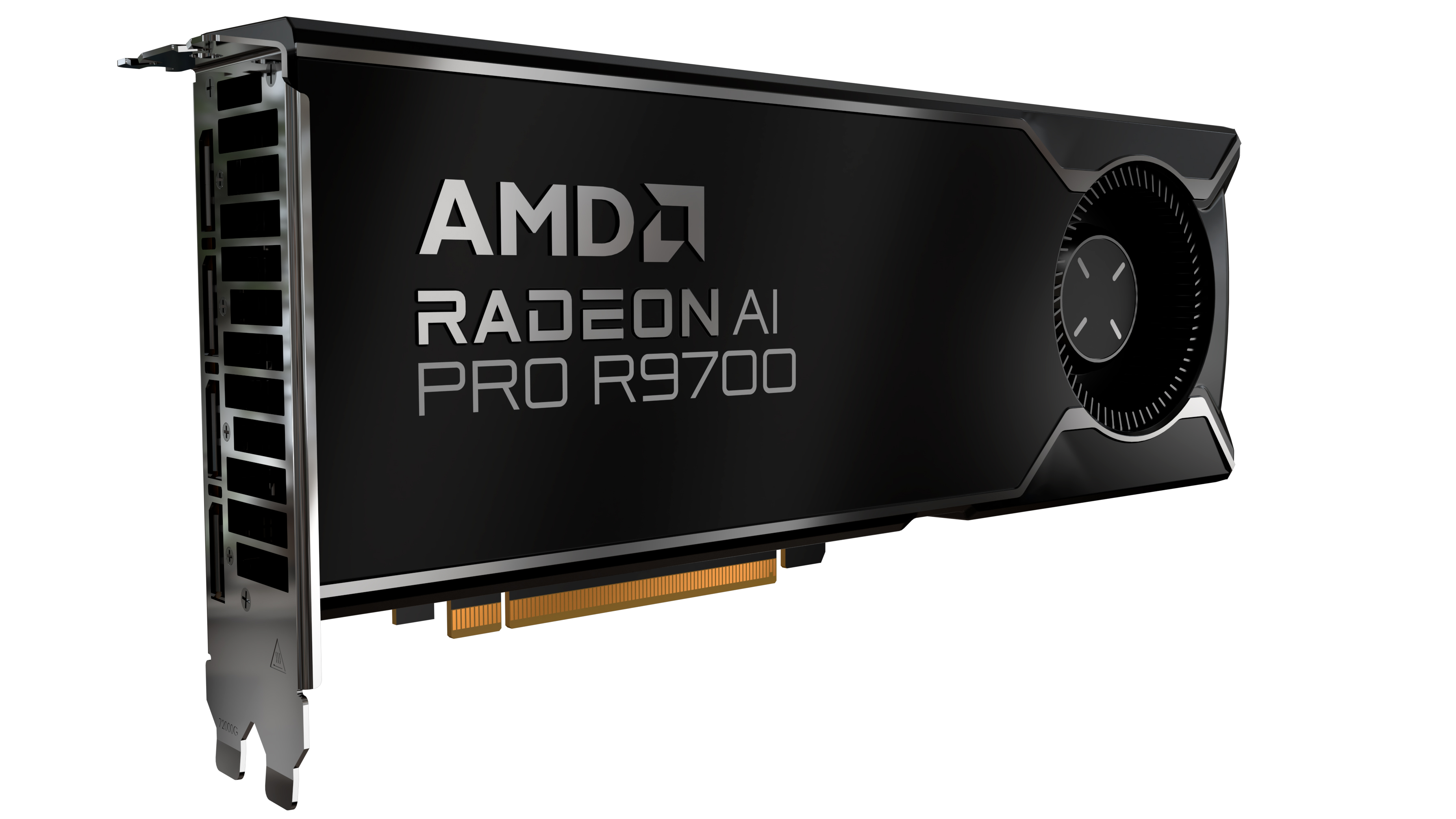
The Radeon AI Pro R9700 has a 300W TBP (Total Board Power). It's 15% greater than the Radeon Pro W7800 32GB and 7% higher than the Radeon Pro W7800 48GB. Similar to most workstation-grade graphics cards, the Radeon AI Pro R9700 has the power connector at the rear. AMD has confirmed that the graphics card utilizes the 12V-2x6 power connector. The Radeon AI Pro R9700 renders illustrate the graphics card featuring four DisplayPort outputs. Since it uses the RDNA 4 architecture, these outputs should conform to the 2.1a standard.
AMD has announced that the Radeon AI Pro R9700 will launch in July, but it has not revealed pricing details. In contrast, the Radeon Pro W7800 debuted at $2,499 two years ago and has maintained most of its value, currently priced at $2,399. We will soon learn the price of the Radeon AI Pro R9700 as its launch approaches in just a couple of months. AMD anticipates a healthy supply of the Radeon AI Pro R9700 from its partners, including ASRock, Asus, Gigabyte, PowerColor, Sapphire, XFX, and Yeston.
Follow Tom's Hardware on Google News to get our up-to-date news, analysis, and reviews in your feeds. Make sure to click the Follow button.

Zhiye Liu is a news editor and memory reviewer at Tom’s Hardware. Although he loves everything that’s hardware, he has a soft spot for CPUs, GPUs, and RAM.
- Paul AlcornManaging Editor: News and Emerging Tech
-
cyrusfox Betting these will find a home in the university environment, but the Radeon Pro needs better software support, I would rank their support as last compared to the other 2 in the professional sphere. Intel is nascent in this space but has always done a solid job working ensuring software exist to support on professional applications (Linux, Adobe, etc...) as well as having the home field advantage on iGPU so many things already translate, while Nvidia is the gold standard, if money isn't a concern nobody buys anything else.Reply -
abufrejoval Could you please just stop to suggest that you can just stack GPUs over PCIe for additive compute power and model sizes?Reply
That works as well as trying to create a 96 core EPYC equivalent server from a bunch of 8-core notebooks linked via WIFI or Gbit Ethernet.